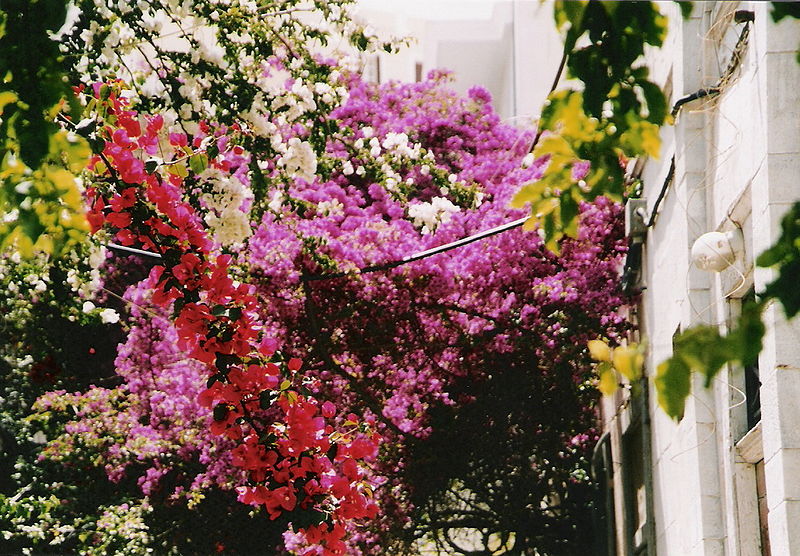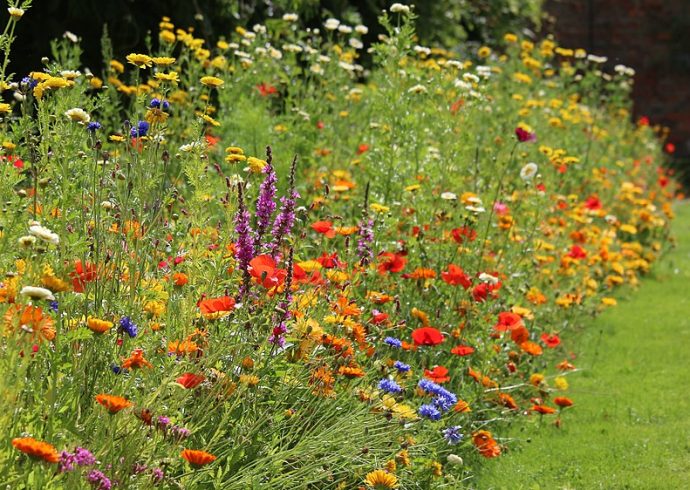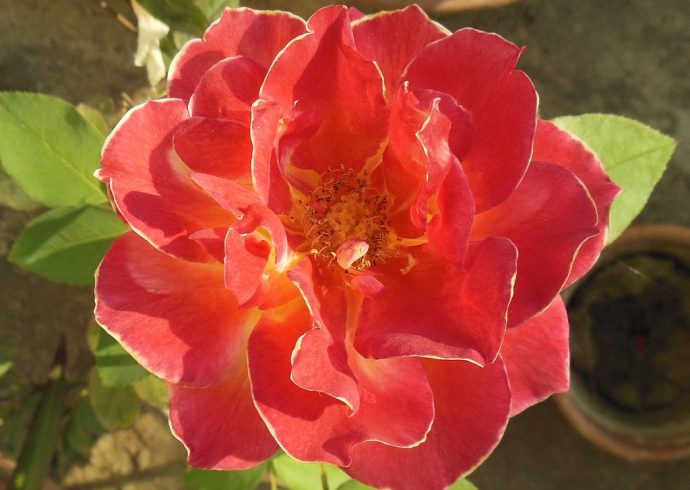
Growing Bougainvillea
Bougainvillea is a beautiful plant that comes in purple, pink, white, yellow, or red flowers. Each flower resembles a delicate butterfly folded up and sitting on a plant. Imagine many butterflies sitting on an evergreen bush like that. Of course the flowers are not really butterflies but they are a joy to admire. The bougainvillea plant thrives the best in a warm climate and in the southern part of the United States, will blossom year round. This tropical plant can be grown either indoors or outdoors. Outdoors, the bougainvillea can be trained to grow up a trellis as the plant itself is a vine.
Bougainvillea blossoms the best where it has exposure to full sunlight. Avoid areas that have even partial shade as that will produce only leaves. A front yard garden where there are no trees nearby is an ideal place to plant the bougainvillea. It is important to keep in mind that once a bougainvillea is planted, it is best left there as it does not transplant well due to the fragile root system. This plant can grow up to thirty feet tall but can be kept under control through pruning.
Prepare the soil before planting. Turn over and break up the soil thoroughly to ensure drainage. You can add some fertilizer to the soil if desired but it is not an absolute requirement. Avoid planting bougainvillea in a heavy clay soil. If you yard has heavy clay, add some outdoor gardening soil. Dig a hole deep enough to cover the roots of the plant, then cover with soil and pack down lightly. Water it well after planting. When it comes to watering, make sure the plant does not dry out during the hot seasons. Bougainvillea likes damp soil so check it every few days during hot seasons to make sure the soil does not dry up too quickly.
Bougainvillea benefits from fertilizing, as do all other flowering plants. Use a fertilizer that contains phosphorus, iron, and magnesium. The plant does not require a lot of fertilizer. The best time to apply the fertilizer is right after the plant has been watered so the fertilizer does not burn the leaves or roots of the plant.
The plant does not have too many pests but keep an eye out for caterpillars, mites, and aphids, which can destroy the leaves of the plant. A pesticide recommended by your local nursery will help to solve the problem. Because the bougainvillea has such delicate leaves, a pesticide that does not further cause destruction of the plant must be used.
Once your bougainvillea has been planted, you can enjoy its bright blooms.
Image Credit: Ermoupolis Syros (Greece) in May 2003 by ERWEH, Creative Commons Attribution-Share Alike 2.0 Germany. Wikimedia Commons.


